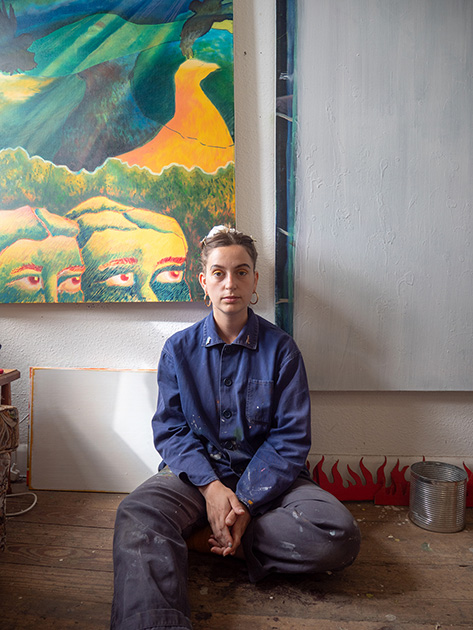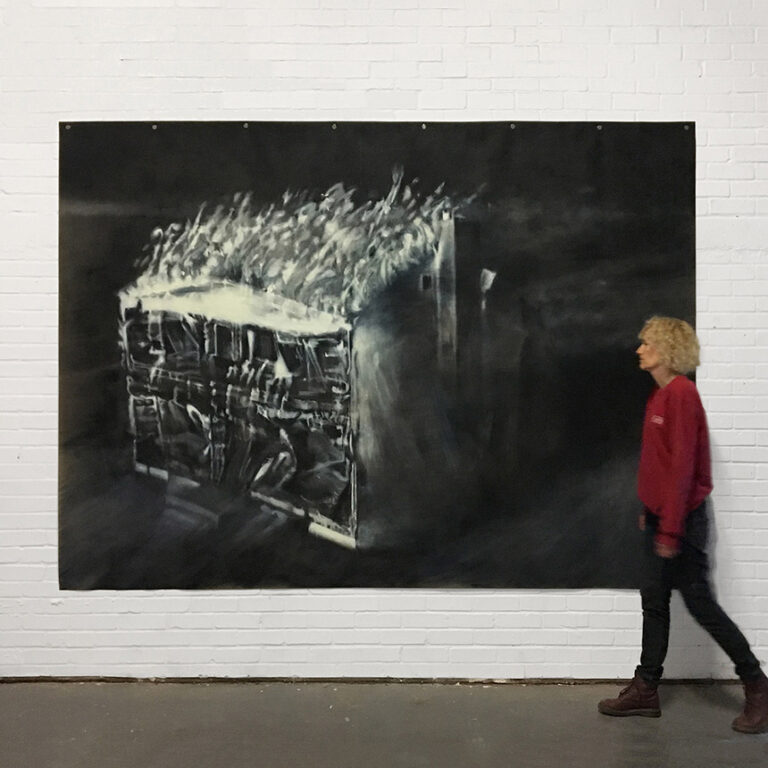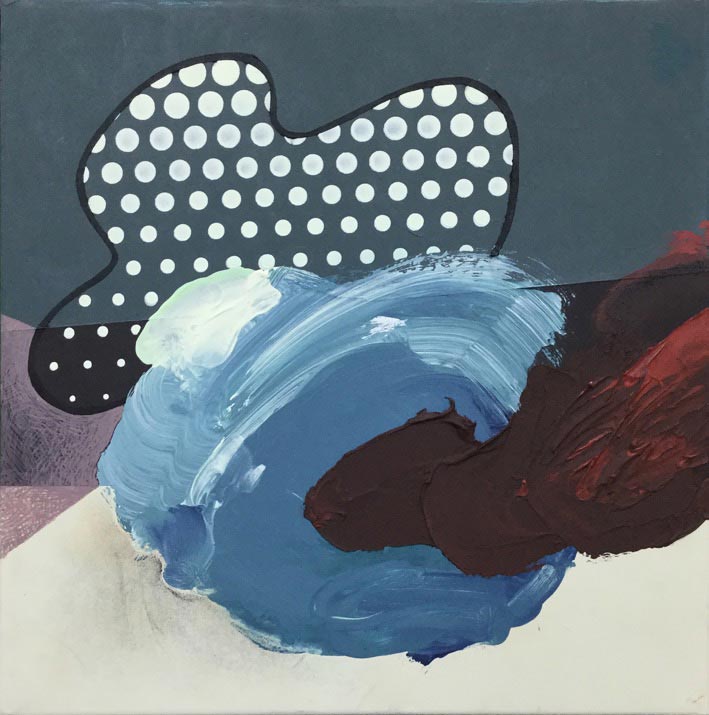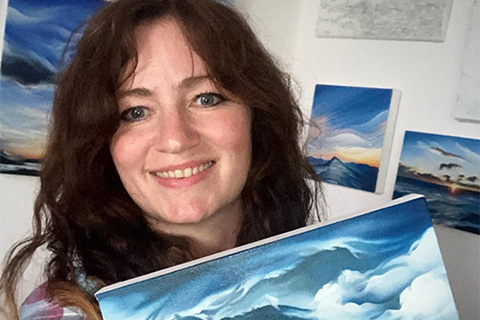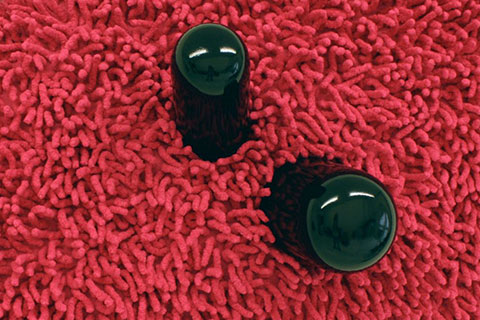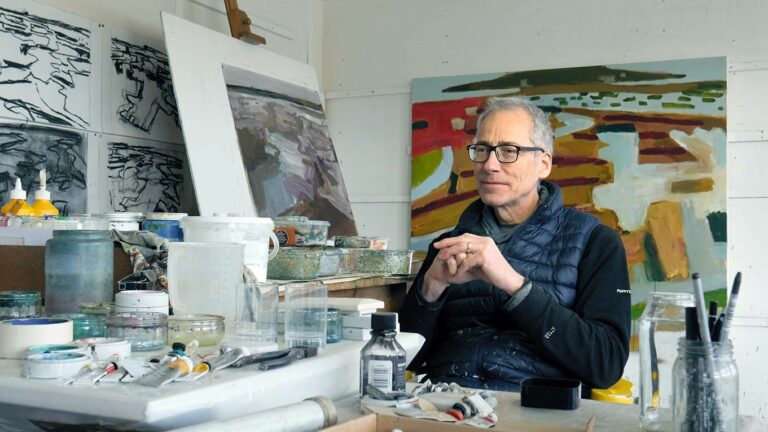Paul Newman: Artist of the Month
Artist of the Month July 2023:
Paul Newman, selected and interviewed by Paul Newman for CBP.
For this month’s artist of the month article something of a different approach. Through a set of circumstances and a conceptual link to the performance aspects of Paul Newman’s practice a guest art critic / writer Derek Shard was going to interview Paul. This pseudonym, a façade, was dropped and Paul Newman will now be interviewing Paul Newman instead. Still play acting, but with less pretence. Some of the questions are based on recollections of conversations with others including friends and curators about his work. All of the thoughts and opinions presented here are totally subjective.
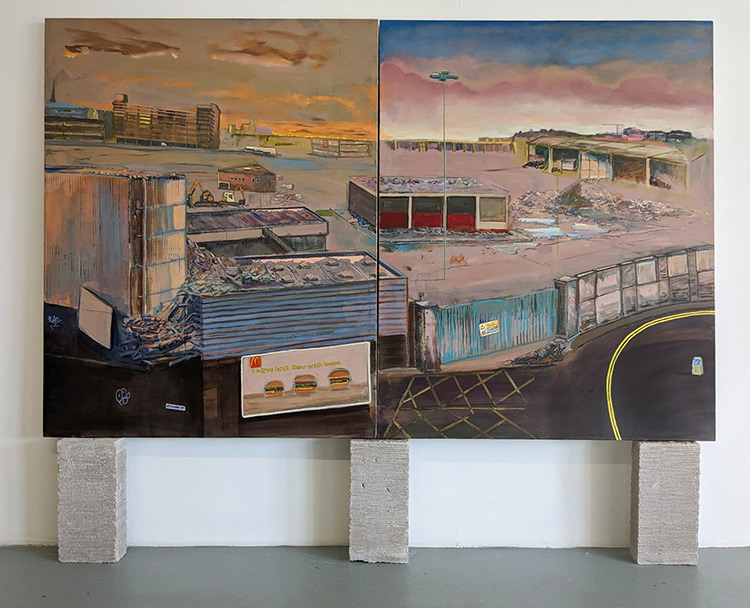
PN: Hi Paul, so we’ll start in front of these large 4 x 5’ traditional salon sized paintings depicting broken landscapes with ruins and elements of art history landscape painting. Within them are strange, detached figures, and rusting white vans. There is what looks like a Frankenstein’s Monster in one; What is your work about, or why?
PN: I think that’s basically it’s a tableau, an arrangement of references from Romantic era landscape painting, modern demolition and classic monster of the movies. These are the things I enjoy painting, like experiencing historical landscape paintings in a museum environment, being transported.
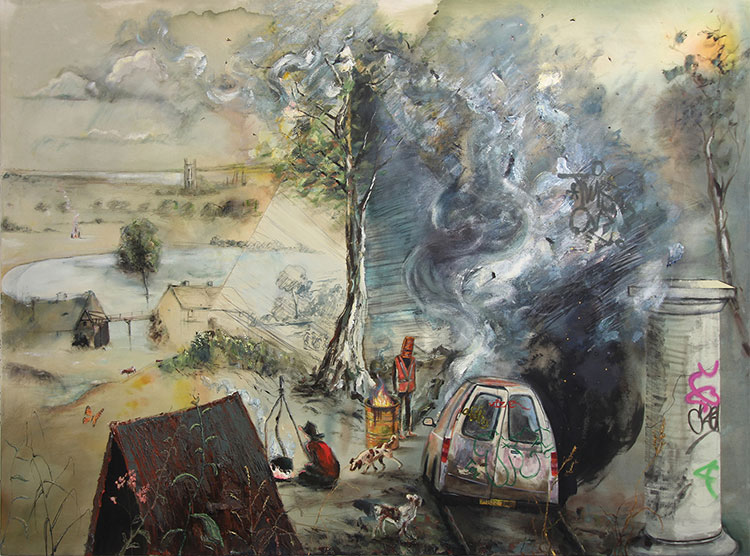
PN: I think your rephrasing your own artist statement, you’re not really telling me what work is about Paul.
PN: Oh ok, well these landscapes are unstable, like this version of Frankenstein’s monster, a weary, awkward character journeying through an unstable environment, looking to reach a destination or find a resting place. It is about my enjoyment of painting this imagery; paintings and my memories of experiencing them in their museum environment. There is a sense of wanting to capture a noirish melancholy from this experience and other influences like 60’s technicolor Gothic revivalist hammer horror films. Things that stimulated me growing up and still do. But there is anxiety in our climate of uncertainty and local with urban regeneration with the noise the demolition, all around the artist studios where I’m based. How long before this studio space crumbles, and the tenants evicted to make way for more urban luxury apartments? I feel uncertain, unable to claim stability as a person and as an artist in terms of forging a career, acknowledgement, and success. The landscape is shifting all the time, yet these feelings and actions remain the same. And the creature is trying to make do and mend his own broken environment.
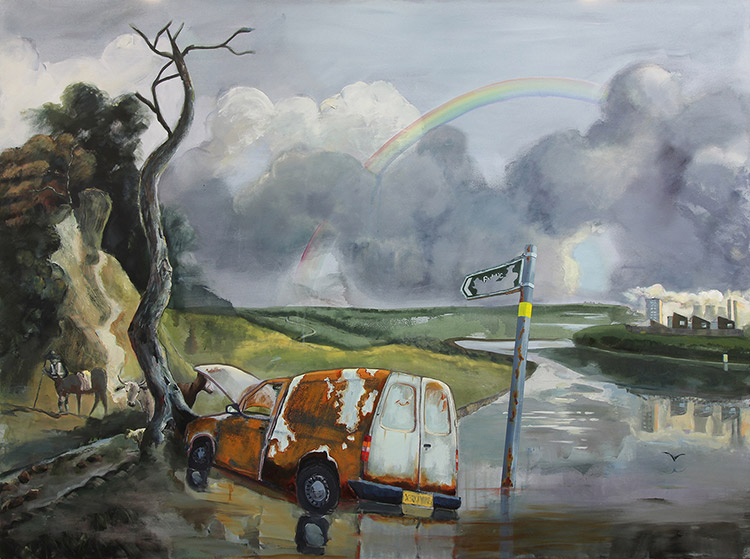
PN: I think we’re getting there; the work is about you.
PN: Yes, though it is a kind of theatre, a staging of these elements and feelings, so its autobiographical though pretend or play acting through the imagery and reference points.
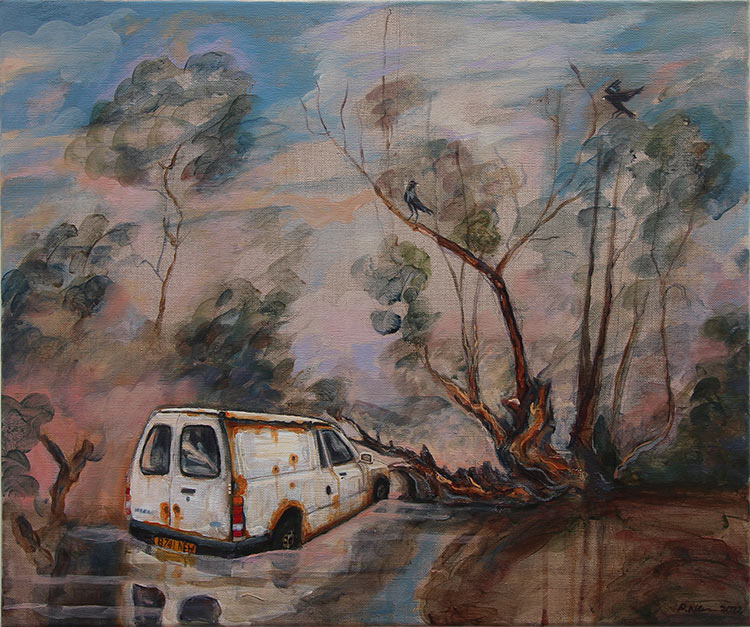
PN: And these feelings, this identity, is that something encapsulated in recent solo show ‘In Ruin’ for Stryx Gallery in Birmingham?
PN: It represents my interest in ruins, from painting ruins which I think I first had the desire to seeing a collection of Constable’s Hadleigh Castle and several large-scale studies at Tate Britain many years ago, with their brooding melancholy, compulsion and repetition of subject and its soulful metaphors. I was recommended a book recently from a friend ‘In Ruins’ by Christopher Woodward. It essays the alure and romantic fascination with Ruins. There’s a chapter ‘Haunted Houses’ which discusses Edgar Allen Poe’s House of Usher and the metaphor of the ruined, crumbling palace with the mind of the tortured owner, which in turn links to the broken house, heart and mind of Miss Havisham in Great Expectations. This sowed the seed to present some of my paintings which depict ruin of dereliction and also performance which dealt with a psychology of repetition and decline of body and mind, through failed desires and compulsions like exercise. This became a jarring performance ‘Ghost Rope’ which acted out a HIIT exercise class on You Tube. It was somewhat incongruous with the tone of the paintings perhaps.
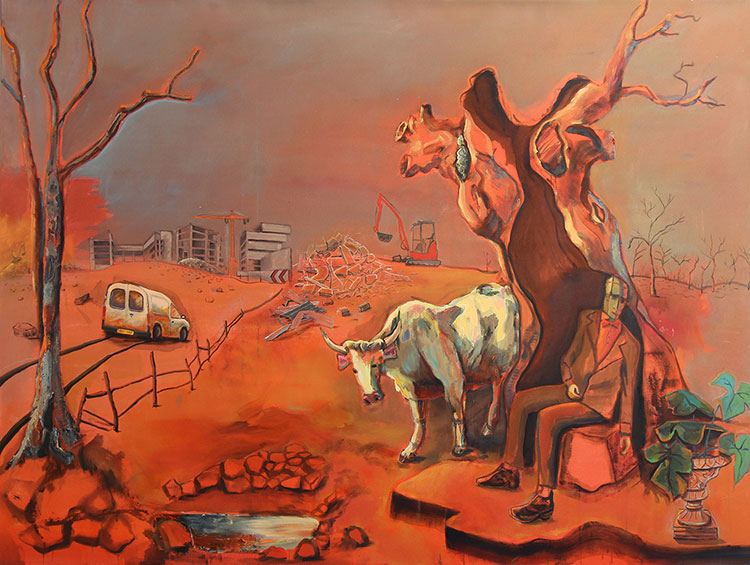
PN: Quite personal stuff then. I wanted to ask you about the performances how they relate to the paintings. And how, as you put it these incongruous elements fit together.
PN: I don’t think of them as performances. Well, they are, but I can’t perform or act confidently in that sense. When I was younger, 13 or so I used to play act in front of the mirror wearing monster masks. I don’t think I wanted to be a monster, but I was interested in makeup and movie effects of the time, pre -digital. I went in the direction of being an artist / painter instead, which is less technical but still tactile with the medium and material. When I do these occasional performances, they are with a mask I’ve made, mirror man, sugar cube head or Frankenstein’s monster and wearing them I am completely separated from the audience like I’m in another room on my own, play acting. The performances are continuous, always minimal content and repetitious. I think I looked at my somewhat awkward figurative painting and saw potential of the characters in them, becoming an extension through the live performances, although as a suggestion rather than directly acting out a scene from a painting. Though maybe that’s the next logical step, to tie them directly to the paintings, or use the paintings as a backdrop like a stage set. I did have a solo exhibition called ‘Stage’ at mac Birmingham in 2015. I think I’m always working through ideas that are unfinished or unfulfilled even in exhibition context. I keep going back and developing further, or temporarily parking something and moving on to something else.
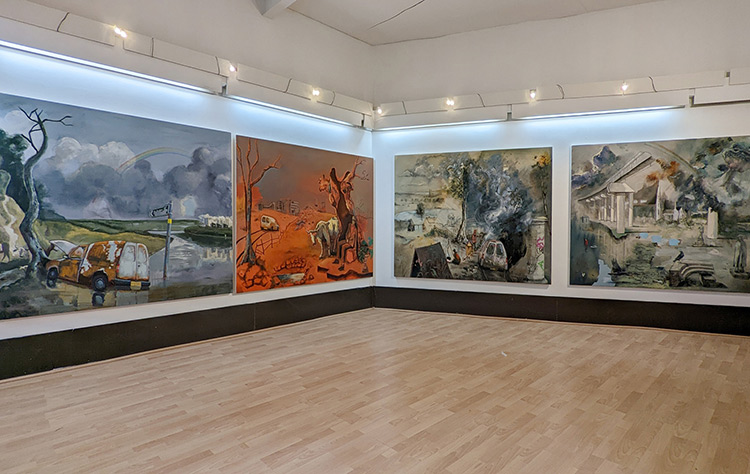
PN: That sounds like a dilemma, not being sure, not finishing the work to a state you’re completely satisfied with or having too many options. Do you listen to your own voice in making your work, or are you influenced by other peoples’ opinions, friends, curators, other artists, painters and non-painters?
PN: I’m influenced by other people’s feedback yes. And I think it has affected my decision making. I don’t know if it’s stunted my development in not drilling down and focusing on one thing. I can catagorise my work into different types: Figures in landscape painting with a graphic style. Or figure / landscape painting that is more abstract with more ‘painterly’ elements and mark making diversions. Also, the masked performances. And studio props based on the narrative of the creative process, and how residues of that creative process can get displayed as ‘finished’ works. I’ve also an going series of collages; semi abstract box frame works that were originally inspired by Paul Nash style paintings, which is another influence along with my Gainsborough / Constable references. I could add more, and I’ve had feedback preferring different aspects of my work, less or more. Recently, I’ve been switching between styles and approaches within the same year, picking back up on unfinished or rested elements of my portfolio.
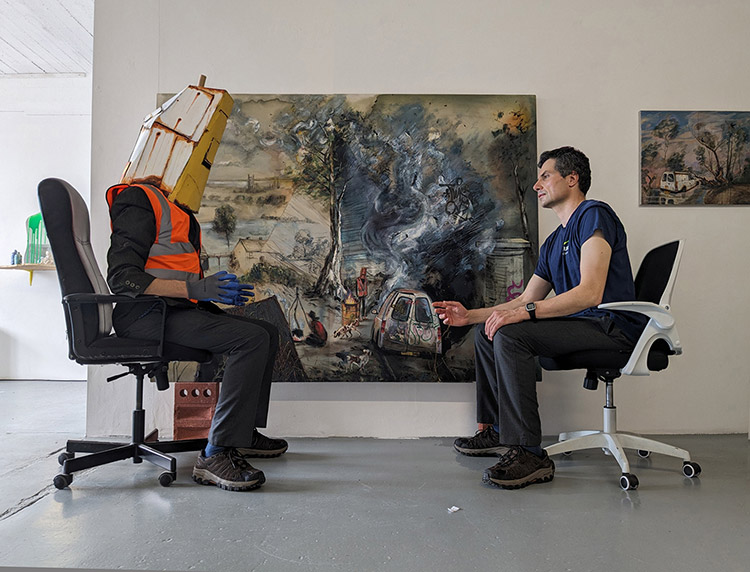
PN: One thing I would say that when you look at a small selection of your work, the relationships can seem a little jarring or confusing, but I remember seeing the show you mentioned, ‘Stage’ at mac birmingham with a bit of all these elements you’ve discussed and you really did get a sense of an identity a sensibility that was staged or woven together for the audience. The pieces of the jigsaw started to come together and to make sense.
PN: I think that comes about through time, as an artist gradually developing your portfolio, the personal language you create and the things you dip into and pull out, maybe re-frame slightly the next time. At the centre, I’d like to consider myself a painter, even when its not painting it has my own painterly approach or connection to it, though I’m not totally sure if I’m honest.
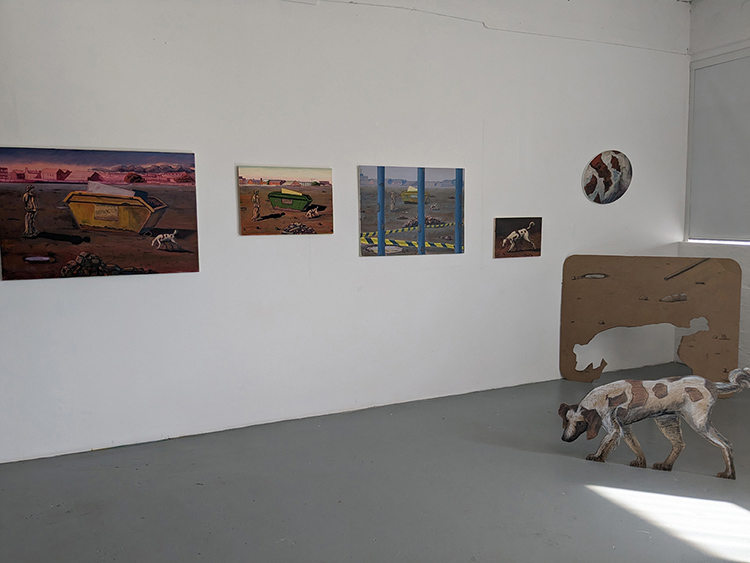
PN: Well, I’m interested and invested in your painting anyway. Tell me about how you approach the paintings, make marks, translate your imagery.
PN: The English Gothic series; the strange characters in Romantic landscape and urban ruin settings are based on Photoshop and mixed media collages as a composition which naturally get added to when a painting starts. I then respond to the ground I put down so when the painting is developed there’s something of every stage showing including underpainting and drawing. Maybe it reflects the uncertainty of the landscapes I’m describing, constantly shifting. My painting style can be quite awkward, a bit staccato, so the paintings can look like they are a bit patchwork and with a collaging sensibility. A bit like Frankenstein’s monster, maybe a self-perception of my own awkward mannerisms. Acrylic paints suit this patchwork painting technique.
I remember having my work in a Marmite Painting Prize exhibition show in London and another artist commented on my painting saying it was a shame it was in acrylic, not oils. Another artist said why? And the first artist said, ‘because it’s so unnatural.’ And the second artist argued in my defense, ‘what is natural, define natural?’ I don’t think I said very much because I was taken aback by the initial criticism, but the comments did make think about playing to my own individual strengths and approaches. I still intend to have a go with oils though, one day, soon…
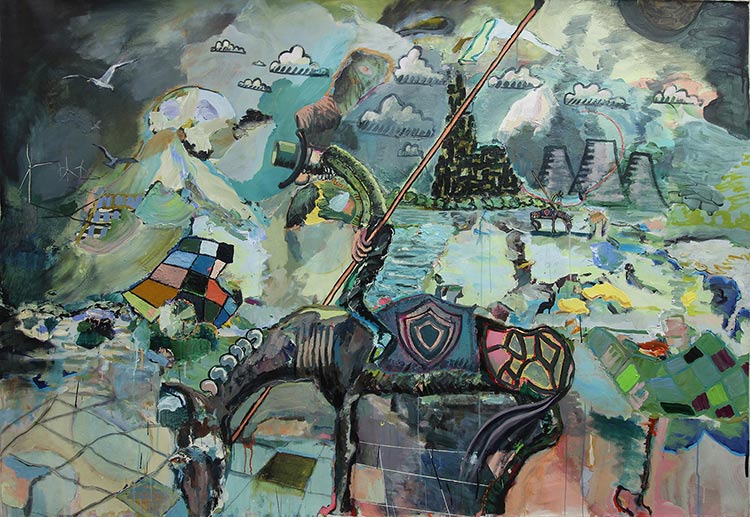
PN: I think your approach to painting is very you and that’s the most important thing. I think there are always interesting painterly detours, even in the more straight forward figurative ones, as well as what you describe as the more abstract ones. Do you have the same approach to both your figurative and abstract paintings?
PN: I think so, to a degree in I’m responding to what I put down before. I used to make really fussy congested and far more abstract paintings, but I got so bogged down and lost with them that I went the other way with far more straight forward figure / background paintings. There was less struggle, less wasted hours and less anxiety. Here I’m admitting something, that maybe I’m not pushing myself enough as a painter with the more figurative ones. I did return to two abandoned more abstract paintings during 2021/21; Don Quixote I &II in which I pulled out a more defined figurative reference; the Don Quixote character on horseback, and they seem to have a balance of directness and shifting complexity, so maybe that’s the direction to pursue. Green Fly too, I returned to that and pulled out clearer elements of a room in a previously more abstract painting. It was a period started during Lockdown of revisiting, recycling older paintings. I think I can now slip into a sensibility of a different type of painting when I set about a session with it, drawing on memories of mannerisms and approaches to that painting. I’ve also on more than one occasion exhibited paintings that I thought were finished and then thought, ‘no, undercooked’ and gone back and reworked or added to them, when I’m less invested or precious about them. That happened with the English Gothic landscape series which I first showed at Coventry Biennale in 2017 then returned to them in the studio right up to last year 2022.
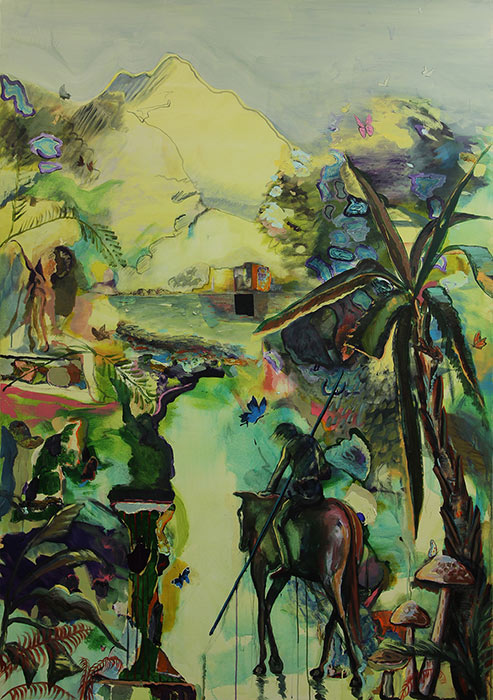
PN: I think that’s part of you, your evolving process and painting subject of uncertainty itself. One aspect I would say is certain and defined is the aforementioned English Gothic series with its collage of historical landscape painting references, vans and monsters and also how defined your statement is about this series. How do you see this body of work in relation to other contemporary landscape painting? I see other painting around of urban dereliction at the moment and painting ruins has always been a well mined theme in art from the Enlightenment period of travel and discovery of classical antiquity.
PN: I’m not sure if I see myself directly as a landscape painter. When I started referencing or quoting historical landscape paintings, it was a paint spattered postcard of Constables Hadleigh Castle from the Constable exhibition mentioned at the beginning of this interview. Then it was about finding things in my studio to paint or reference, and the artists postcard was one thing. Other elements got added to the narrative, like the Ford Escort Van, classic monsters of the movies like the human fly and Frankenstein’s Monster, along with references from urban environments and redevelopments around my studio (The anxiety of change and transformation). But really I’m not closely looking or transcribing the landscape around me. And I don’t think I’m part of a contemporary landscape painting movement specifically, for example, artists featured in a recent landscape exhibition ‘Arcadia for All?’ I’m using my elements as props creating a kind of tableau from the studio as already mentioned.
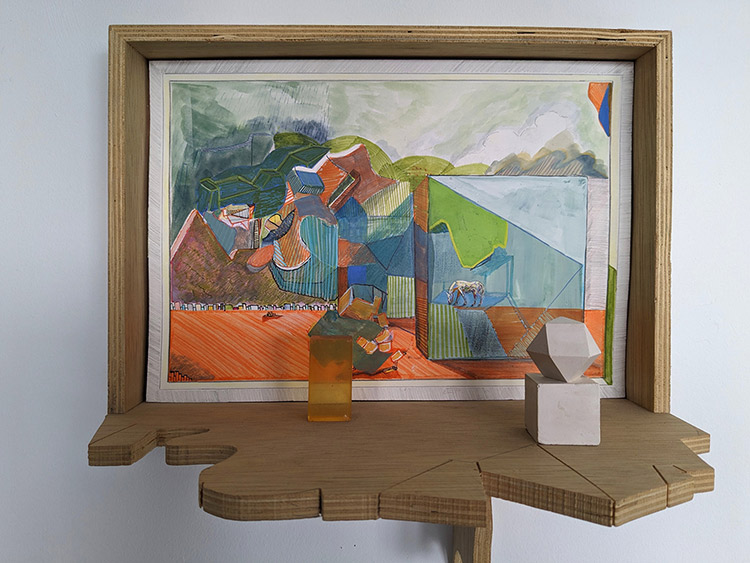
PN: And what about the white van that keeps cropping up. It’s quite figurative, we always see the back like a pair of eyes.
PN: My father used to drive a similar one in the 1980’s or 90’s working away from home as a carpenter, and he used to reverse the van back up the drive on a Friday night and me and my brother would always be very excited. I saw one parked on the road in the mid 2000’s and I photographed it. I’ve been photographing it ever since, if I see a similar one parked, or on the motorway and it’s been appearing in my work in various versions over the years.
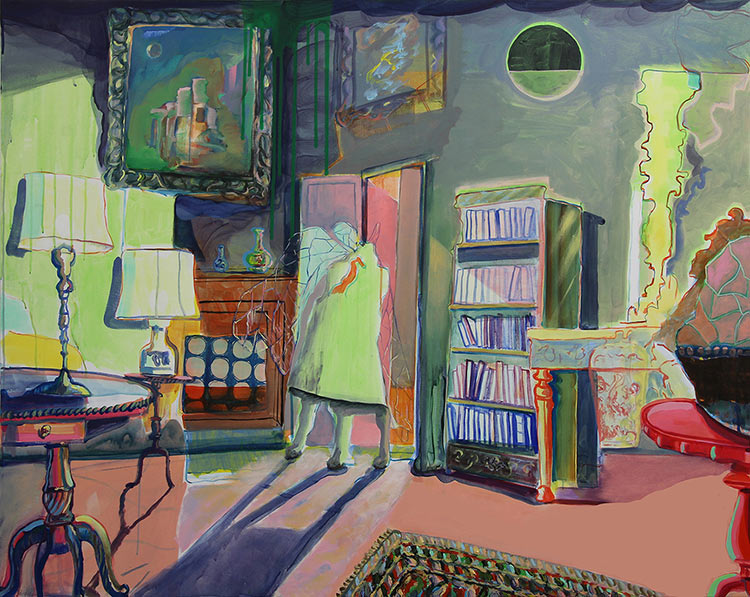
PN: Another personal element, part of the work that’s about your history of experience and it’s interesting how it’s not always the same, its painted slightly differently in each painting. I wanted to ask about other characters in your work like the human fly character, with its reference to urban or domestic mundanity and to Kafka’s Metamorphosis, but I think we need to wrap this interview up as its nearly four pages long. Finally, then, what projects are you working on now, and what’s next?
PN: I’ve just finished my exhibition / residency at Stryx Gallery in Birmingham ‘In Ruins’ for their Soup VI residency program. I’d like to pick up on elements that weren’t fully finished or could be developed further, as I mentioned nothings ever finished or resolved. I’d like to play with oil paints…I’m also taking part in a group show at mac Birmingham curated by Rachel Bradley called Worlds Away: Art, Nature and Well-Being where I’m showing a couple paintings including a Don Quixote. The exhibition also features work by Lisa Milroy and Stanley Spencer so I’m quite excited to be part of that.
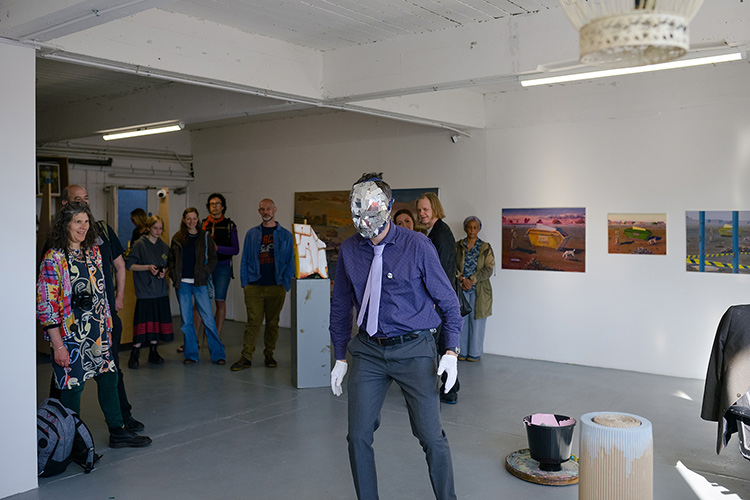
PN: Well, I very much look forward to seeing your work in that one. As always, thank you for your time and frankness in your answers.
PN: Thank you Paul, for your thought provoking conversation, as always. I’ll see you there at the Worlds Away show, if not before.
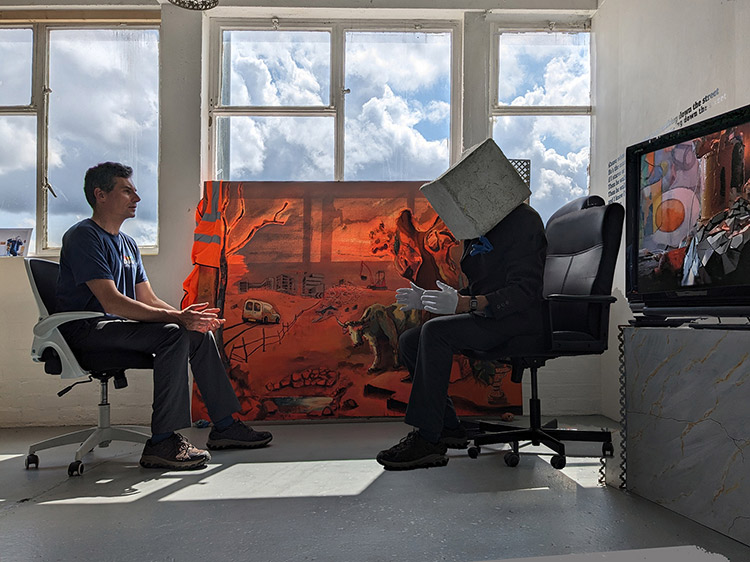
Paul Newman is an artist based in Birmingham, solo exhibitions and projects include 2023 ‘In Ruin’ Stryx, Birmingham, ‘English Gothic Revisited’, Showcase Gallery, Jubilee Trade Centre, 2019 ‘It’s Not the End of the World’ Birmingham School of Art Gallery. 2018 ‘English Gothic’, Artefact Gallery, Stirchley, 2015 ‘Stage’ mac Birmingham. 2014 ‘After the Flood’ Nuneaton Museum and Art Gallery. Recent group shows include 2022 ‘Vitalistic Fantasies’ Elysium Gallery, Swansea. 2021 ‘We are such as dreams are made on’ Aleph Contemporary at the Cello Factory, London, ‘Darkness at Noon’ ATP Gallery London.
Paul writes the artist of the month section for Contemporary British Painting (usually for other artists) Paul teaches at Loughborough University School of Art. He has work represented by Aleph Contemporary and Stryx Gallery and work in collections including New Art Gallery Walsall and The Priseman-Seabrook collection.



